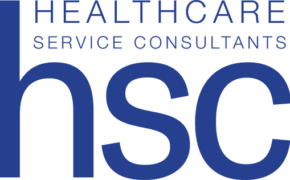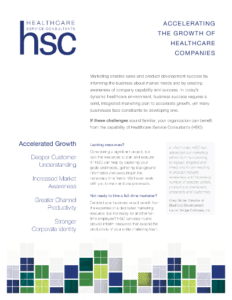
Lead generation is often attributed to marketing. When thinking about the sales funnel, the reality is far more nuanced. Marketing is often perceived as the catalyst for generating leads. Yet, it’s crucial to view marketing as a strategic partner in the lead generation process.
Collaboration between marketing and sales is essential. Each function plays a complementary role in attracting, developing, and driving prospects through the sales funnel.
Redefining the Sales Funnel Roadmap
The sales funnel is more than a predefined roadmap that guides prospects through the stages. These stages include initial awareness, interest, consideration, and conversion. At its core, the sales funnel is a strategic approach to guide your prospects through the process of:
- recognizing and identifying an unmet need in their daily workflows
- discovering a credible solution in your products
- deciding to not only take action to buy, but nurture a valuable long-term relationship with your organization
Here, we explore the interplay between marketing and sales at each stage of the funnel. We examine their respective roles and contributions in advancing prospects towards conversion.
Starting at the Top
The funnel journey encompasses three distinct stages: top, middle, and bottom. At the top of the funnel, marketing plays the lead role in capturing attention and building awareness. By casting a wide net that leverages a variety of marketing channels, you can maximize your reach and capture the attention of your target audience. Examples of top-of-funnel activities include the following.
Website Messaging. Crafting compelling messaging on your website communicates your key value propositions, captures visitor attention, and encourages further exploration of products and services. This should convert website visitors into prospects.
Content Marketing. Creating and sharing informative content educates prospects, establishes credibility, and attracts organic traffic to your website. Content may include blogs, articles, videos, and whitepapers.
Social Media Outreach. Leverage social media platforms to share content, engage with followers, and take part in relevant discussions. This increases brand visibility and fosters community engagement.
Email Campaigns. Targeted email campaigns share valuable content, messaging and announcements with key clinical, technical, or administrative stakeholders within healthcare IT. This allows you to foster engagement and drive prospects to the next stage of the funnel.
Webinars and Workshops. Hosting educational webinars or workshops tailored to the unique problems and needs of each key persona provides an interactive platform to:
- showcase expertise
- illustrate an understanding of key pain points
- generate leads interested in learning more about your offerings
Tradeshows. Exhibiting at tradeshows is an opportunity for marketing to create the ability for sales to meet in-person with potential new leads as well as individuals in all phases of the sales funnel. Tradeshows often provide the opportunity to speak or take part in panel discussions. These thought leadership activities promote engagement between sales and prospects.
Hitting the Middle
Collaboration between marketing and sales intensifies in the middle of the funnel. Prospects transition from initial awareness to deeper consideration of your company’s products and solutions. At this stage, both functions work together to provide more targeted and personalized content. This content should resonate with the specific needs and interests of clinical, technical, and operational stakeholders.
While marketing continues to generate leads and nurture relationships, sales steps in to better understand the specific need of each opportunity—driving prospects closer to conversion. Together, they ensure a seamless transition for healthcare IT prospects as they move through the funnel. Here are examples of collaborative middle-of-funnel activities.
Consistency in Messaging. Marketing can help drive consistency in messaging by providing sales teams with clear guidelines, value propositions, and key talking points. This ensures sales representatives communicate your brand, products, and value propositions consistently across all interactions with targeted organizations or prospects. Doing so reinforces credibility and trust throughout the middle-of-funnel engagement process.
Sales Enablement. Product marketing equips sales teams with the necessary tools, resources, and collateral to engage prospects and communicate your unique selling propositions. This may include sales presentations, case studies, and product demos.
Stakeholder Engagement. Product marketing can also assist sales when engaging with diverse stakeholders, including technologists, physicians, and administrative teams. One approach is to share case examples from different customer organizations. Another is to gather feedback to further refine marketing messaging and product strategies.
Account-Based Marketing (ABM). ABM strategies target key accounts or high-value prospects with personalized content that resonates with their distinct needs and challenges. It also demonstrates the value of your solutions through their lens.
Reaching the Bottom
As prospects reach the bottom of the marketing funnel, sales assumes the lead role in guiding them towards conversion. At this critical stage, the focus shifts from initial engagement to nurturing relationships and facilitating these final stages of the sales process. Sales representatives play a pivotal role in building trust, removing roadblocks, and providing personalized support as prospects make their decisions.
What is possibly more important than closing a sale? Building valuable relationships and loyalty that extends far beyond the point of sale. Such relationships are key to maintaining long-term customers. They are a valuable input to product marketing, as they provide opportunities for customers to become advocates. This relationship results in case studies and testimonials that support marketing efforts or introducing businesses to other potential leads through word-of-mouth referrals. Some examples of bottom-of-funnel activities where sales take the lead include the following.
Relationship Building. Establish strong, trust-based relationships with prospects. Foster open communication that results in customer-advocates.
Post-Sale Support. Sales should continue to provide support to customers even after the sale closes. Doing so ensures a smooth transition and addresses any issues or concerns that may arise.
Upselling and Cross-Selling. Astute sales representatives are adept at identifying opportunities to upsell or cross-sell products or services that add value for existing customers. This maximizes revenue and fosters long-term growth.
Customer Advocacy. Sales cultivates customer advocacy by exceeding expectations, delivering exceptional service, and encouraging satisfied customers to refer new business. This then drives further growth and expansion.
The Collaborative Approach to Lead Generation
Successful lead generation and conversion hinges on the collaborative relationship between marketing and sales throughout the sales funnel journey. Marketing plays a crucial role in top-of-funnel activities like generating broad awareness, establishing credibility, and sparking initial interest.
Yet, it’s the collaborative effort between marketing and sales that drives prospects towards the bottom of the funnel—where sales takes the lead on driving conversion and establishing relationships. It’s not a question of marketing versus sales but rather a recognition of the synergies between the two functions in driving meaningful engagement and conversion.
Do you need some help optimizing your lead generation strategy and sales funnel journey? Our healthcare IT product marketing expertise can help. We assist you in developing effective strategies and tools across all stages of the sales funnel. Empower your sales team with tools to convert prospects to long-term customers. Contact us to learn more.




